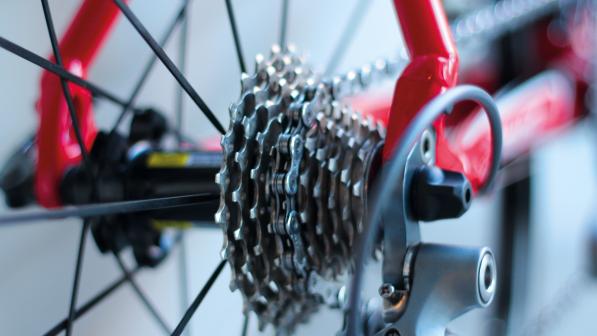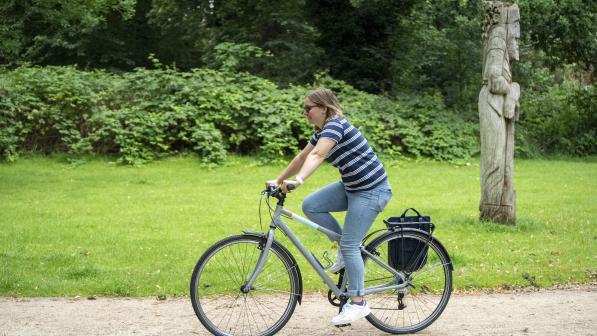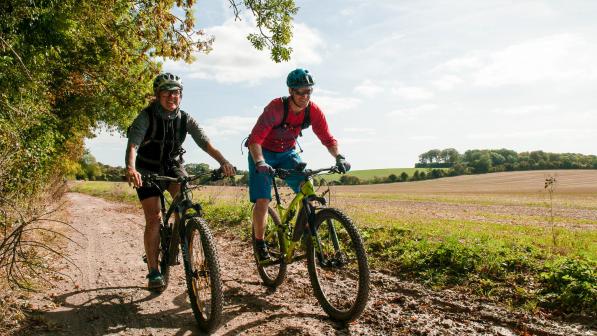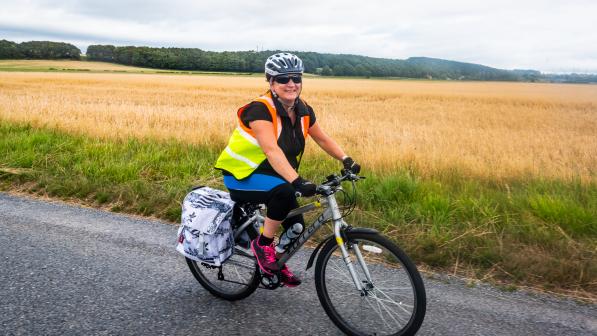A beginners’ guide to … a cycle’s handlebars

A bike’s handlebar is one of its most important components – you wouldn’t get far without one. It has two main functions: steering and giving the rider something to hold onto. It’s also usually where such things as gear shifters, brake levers, lights, bells and even a phone or bike computer mount are positioned.
The handlebar is one of three body contact points – along with the saddle and pedals – and getting the right one for your riding style is essential to ensuring a comfortable ride. Understanding what the handlebar does and the different options will help you choose the right one for you.
How the handlebar works
There are many different options when it comes to handlebars (more on that later) but all of them do the same thing: they allow you to steer the bike.
The handlebar is essentially a tube which is connected to the bike’s steerer tube via the stem. The steerer runs through the head tube and connects to the front fork’s blades. The wheel is mounted to these blades.
The headset is the interface between the head tube and steerer, allowing the fork to rotate and you to steer the bike. This means that when you turn the handlebar, the front wheel moves in the same direction, so the bike goes where you want it to go. If these terms mean nothing to you, check out our guide to cycling jargon.
The handlebar is also where you put your hands, supporting your weight. Hand position is determined by the type of bar you have, which in turn is decided by the type of riding you want to do.

Grips and bar tape are used to improve comfort where you hold onto the bar. Grips are padded or textured ‘sleeves’ that fit over the ends of the handlebar. They’re usually made of rubber or plastic. Bar tape is a strip of material that wraps around bar; it can be gel filled, rubber, plastic, cork or leather. The former are used with flat handlebars, the latter with drop bars – more on these later.
They both offer extra padding so it’s more comfortable to hold onto the bar. They reduce vibration through your hands and also provide a more grippy surface so your hands are less likely to slip. This is especially important if your hands get sweaty – although gloves are also recommended to improve grip and comfort.
What a handlebar is made from
A handlebar can be made from several materials – in fact some of the first bicycle handlebars, back in the 1890s, were made of wood. The most commonly used, though, are aluminium, steel or carbon fibre. Aluminium remains the most popular material because it offers the best compromise in terms of weight, durability and cost.
It’s used in a wide range of bikes, and is good for keeping costs down. Entry-level cycles will have aluminium bars and it’s also found in hybrids, while mountain bikers often prefer it to carbon because it’s thought to be more resilient in the face of impacts.
Steel is a lot heavier but is more durable and more comfortable because it has better vibration-dampening properties – this means it absorbs the vibrations from bumps in the road rather than transmitting them to your hands and arms which can be uncomfortable.
Steel’s properties make it ideal for touring bikes and it’s often used in Dutch-style bikes where riders often prioritise comfort over speed.

Carbon fibre is very light and strong. It also has good vibration-dampening properties. However, it’s expensive. Its stiffness means that it cracks rather than bends or dents, which means it can be harder to find any damage.
These properties make carbon ideal for high-end racing and performance bikes.
Some very high-end bikes have titanium handlebars. This provides a great combination of lightness, durability and comfort, but it’s very expensive.
Different types of handlebars
The first bike handlebars were just straight metal or wooden tubes. Things have moved on since then and today there are at least many different types of handlebars as there are bikes out there, and probably more because each bike can take a variety of bars. Here we look at some of the most common.
Flat bar
This is the design that’s most similar to those first handlebars. It’s also the most popular, seen on hybrids and mountain bikes. As the name suggests, these are a simple flat, mostly straight tube. They’re easy to use – just hold on at each end of the tube, where the grips are – and have plenty of space for a bell, gear shifters, brake levers, phone mount and so on.
Their simplicity makes them most appealing to new cyclists, while their leverage and control means they’re also good for off-road riding. Your hands should be positioned at about shoulder width; however, some mountain bikers prefer much wider than this as it can improve control which is essential on tough terrain.

They give a more upright riding position which is often more accessible and comfortable for beginner riders. However, hand comfort can be limited because there’s only one place to put your hands.
This can be alleviated with the addition of bar ends. These are extensions that can be attached to the bar to provide additional hand holds and are good for longer rides where comfort is of the essence.
A riser bar is a type of flat bar that features a rise from the centre clamp section. They give a slightly more upright riding position.
Drop bar
This is the other style of bar that you’ll see most often. These have a short centre section, similar to a flat bar, but with two C-shaped sections, curving backwards towards the rider, at each end.
New cyclists are often put off by these bars – they’re what you see on professional racing bikes after all! – but they are just as easy to use as a flat bar and have the advantage of lots of different places to put your hands, making them more comfortable on longer rides.
These are found on road and performance bikes, as well as tourers and gravel bikes. Although these days some tourers and gravel bikes have flat bars. Flared bars are also seen on gravel bikes. The drops on these flare out, providing a bit more stability due to the wider grip, making them better for tougher terrain.

There is less room on these bars and the brake levers and gear shifters are combined into one unit to save space. There’s certainly nowhere to mount a basket! But you should still have space for essentials like your bell, front light and bike computer mount.
When it comes to grip positions, you’ll hear people talk about ‘on the flat’, or the straight centre section, ‘on the hoods’, the brake lever hoods, and ‘on the drops’, the flat part of the curved section.
Swapping between these alleviates pressure on your hands and wrists and changes the riding style. The first is the most upright, with the last being the most aerodynamic and so the one seen most in racing. You should aim to be on the hoods most as this gives the best access to the brakes and gears.
Cruiser bar
A cruiser bar has a short straight middle section which then rises up and back towards the rider. This gives the most upright riding position and is ideal for cyclists who prioritise comfort over all else.
This style handlebar is most often seen on beach cruisers and Dutch-style bikes – the sort that you might go shopping with as there’s plenty of space to fit a nice big basket on the front.
Other options
This is just a snapshot of the variety of handlebars available. Some others include bullhorn, which curve up and forwards away from the rider. These provide a very aerodynamic riding position so feature on time trial and triathlon bikes.

Aero or tri bars are two straight bars extended out front where the rider can rest their forearms. These put the rider in a very narrow forward-tuck position that’s very aerodynamic and are also found on time trail and triathlon bikes.
Butterfly bars resemble a broken figure of eight mounted horizontally on the stem. They provide a comfortable upright riding position but with lots of grip positions to alleviate pressure on the hands and wrists, making them popular on touring bikes.
There are many more styles – who remembers the upward U-shaped ‘ape hanger’ bars seen on Choppers and grifters? – but these are the main ones you’re likely to see. Non-standard and adapted cycles will have specialist bars depending on the type of cycle.
A note on upgrading
Upgrading your handlebar is one of the easiest ways to improve comfort. However, it isn’t simply a case of just buying and installing the bar of your choice.
If you have a road bike with a drop bar, the gearing, steering and braking systems will all be built around this. You can’t replace it with a flat bar without changing all that. The same goes for flat bars and the other styles – you have to replace like with like.
So if you’re buying your first bike, keep this in mind and make sure you go for one with a handlebar you can get on with.



